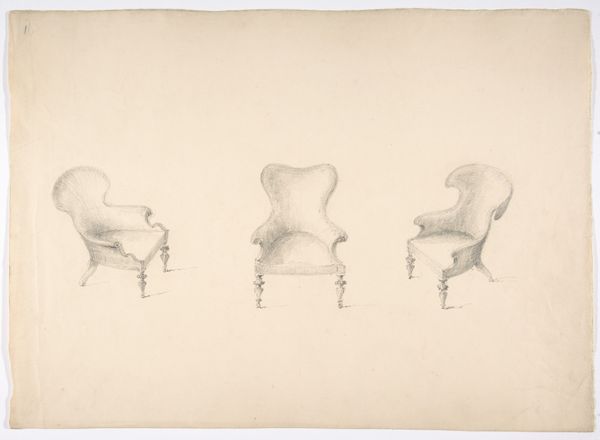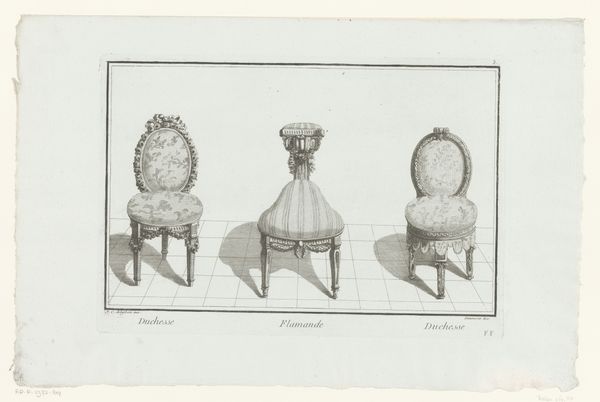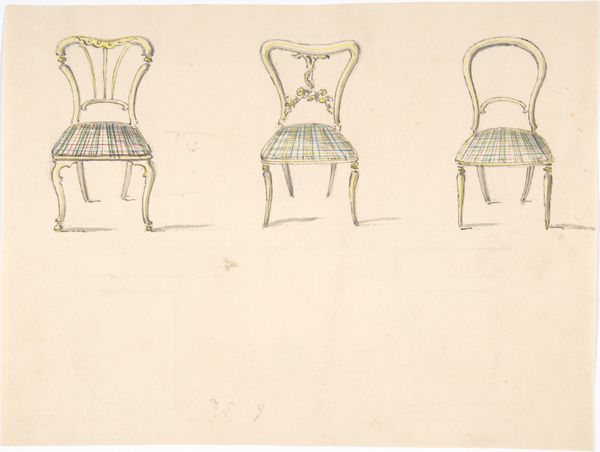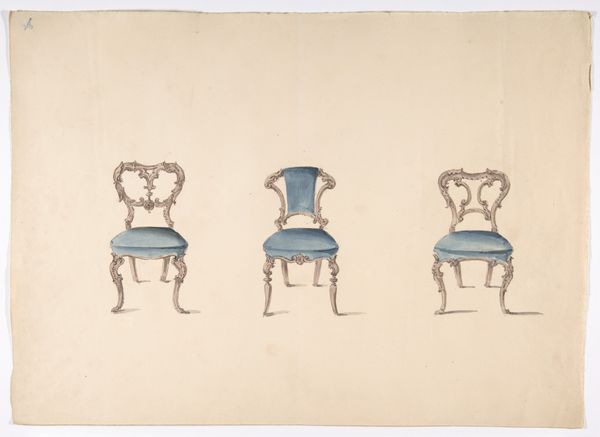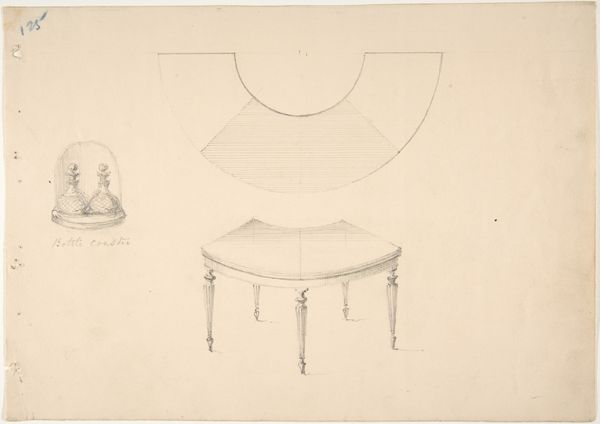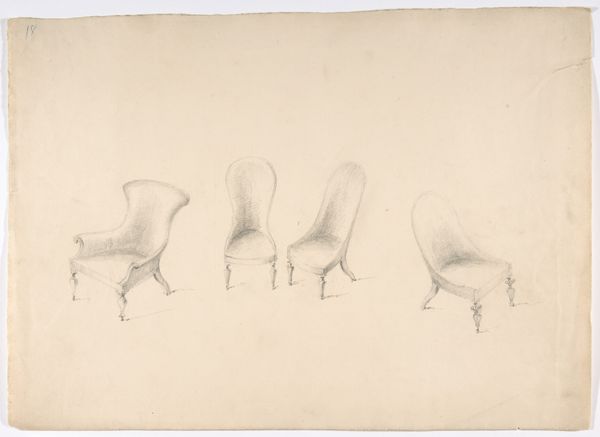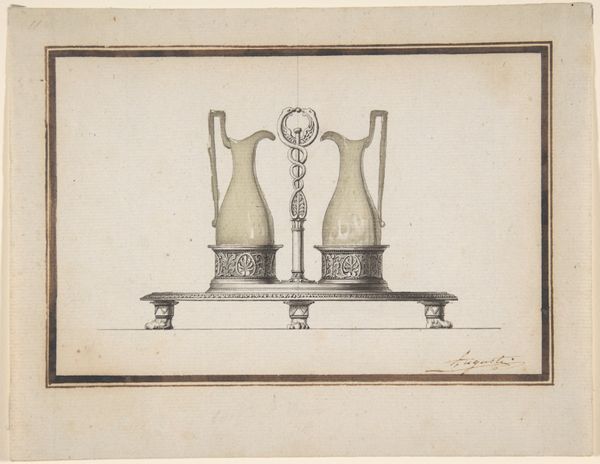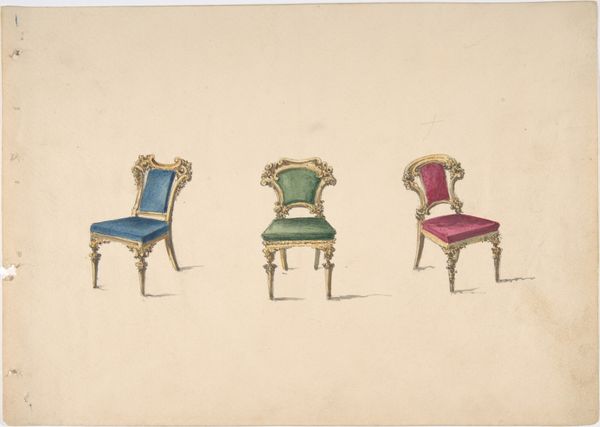
drawing, print, paper, pencil
#
drawing
#
neoclacissism
# print
#
paper
#
pencil
#
academic-art
Dimensions: sheet: 10 7/8 x 15 in. (27.7 x 38.1 cm)
Copyright: Public Domain
Editor: This is "Design for Three Chairs," an anonymous pencil and print drawing on paper, dating from somewhere between 1800 and 1850. I find its symmetry very appealing. It is as though these chairs are presented for consideration or selection, perhaps catering to different preferences or purposes. How might we interpret the cultural relevance of these chairs and the context in which they were conceived? Curator: It is vital to contextualize furniture design within the broader scope of societal hierarchies. During this era, access to certain styles of furniture signaled class and status. So, we need to consider who had access to these designs and who was excluded. Given the Neoclassical aesthetic, how might these chairs reflect and reinforce the prevailing social order, power structures, and gender roles of the time? What narrative were they expected to fulfill for their owners, particularly elite women, in relation to domesticity? Editor: That makes me wonder: could the slight variations in the chair designs represent an acknowledgement, however subtle, of individual tastes within the constraints of societal expectations? Or maybe they were meant for different rooms with different functions? Curator: Perhaps. Yet, we must remain vigilant about not romanticizing such subtle variations. The designs themselves might symbolize restricted opportunities. I wonder: did design, during the Neoclassical era, unintentionally foster individuality or merely perpetuate systemic power dynamics? It’s not so much about the chairs themselves, but rather the stories they silently tell about wealth and access. Consider whose stories were, and were not, considered in the art world. Editor: That makes a lot of sense. I never thought about furniture as something that could represent complex political power dynamics before! Curator: Thinking critically about how everyday objects reflect deeper historical currents makes interpreting design so incredibly rewarding!
Comments
No comments
Be the first to comment and join the conversation on the ultimate creative platform.

